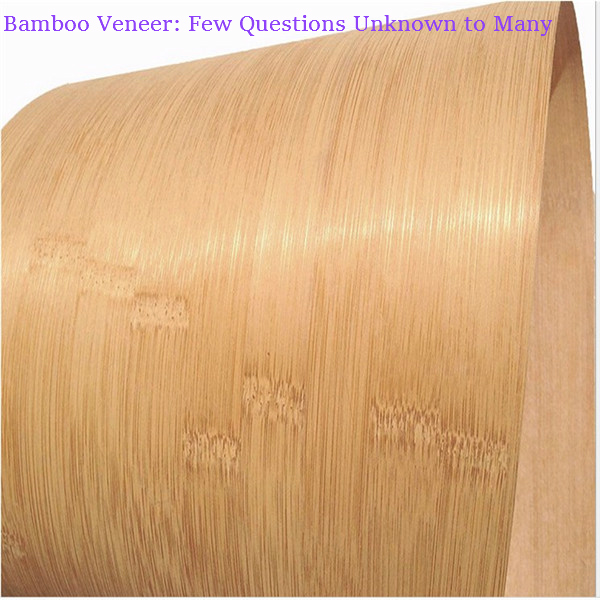Bamboo Veneer: Few Questions Unknown to Many
The best part about selecting bamboo veneer is that walls made of the material ensure warmth during winter while it’s cool in summer. Given the low thermal conductivity of bamboo, the heat retention power in summer is intact while heat loss is bare minimum when it’s chilly outside. All this make it ideal for paving in all the rooms, including bedroom, dining space, study and living room and so on.
Why choose bamboo?
What makes bamboo different from the others is that it’s an ‘endless resource’, which continues to grow faster than any other plant (almost 1 meter per day!). This is particularly true in case of the best species called ‘Moso Bamboo’. This one produces more oxygen and absorbs carbon dioxide better than other varieties at the time of its production. It is for this reason that most shopkeepers and homeowners prefer solid Moso Bamboo products for its guarantee of CO2 neutrality over the whole life cycle.
What is veneering?
Not many might be aware of it, but the process of veneering implies layering with a thin slice of the material, which measures about 1/8 of an inch. It was common among the Egyptians, wherein the veneer is bonded or glued via n adhesive to a cheaper surface that lies right below. The material to which it is attached is usually of an inferior make like MDF or chipboard and thereby flooring, cabinets, panels, furniture are constructed.
One word of caution however- layering with veneer must be done carefully as the layers are so thin that it might get worn out quickly with power sander.
How to make bamboo veneer?
In order to make bamboo veneer, large rectangular blocks of laminated bamboo slats are sliced into equal and thin parts. The slicing machine is used where the laminated bamboo block gets raised and the sharp blade lowers it down further. If you see the look and pattern of the grain, it’s largely because of the slicing that is done either vertically or horizontally on the pressed laminated panels of bamboo (known as side or plain pressed).
Most makers take additional steps for precaution liked backing with a thin yet strong fleece of cellulose that can be bonded with water-resistant PVA glue, so that cracks don’t appear frequently. The lining of cellulose ensures that the bamboo veneer sheets are pressed on a surface, regardless of it being a flat or curved one.
What are the ways of production of bamboo veneer?
Ideally, there are two processes that help in the production of bamboo veneer:
- One is the vertical or side pressed way, where the pattern is of a narrow line, and
- The other is the horizontal or plain pressed way, where the pattern is wide
Why select bamboo veneers over others?
Whether homeowners or interior designers, the love for bamboo veneer is growing by the day. Here are some top reasons why the preference of this material over others:
• Rapidity of growth
bamboo plywood is a renewable resource. The simple fact that it can be harvested annually without any requirement of re-planting is what makes it a hot favorite among many. The plant grows tremendously fast and plantations are scattered all over the world, with few places accounting for higher production.
• Sheer beauty
A typical grain and the nodes of bamboo veneer with minor color variations ensure that the material is always picked over others. From the simple natural ones to the carbonized forms and the mixture of both (tiger), bamboo veneer projects wear a sophisticated and elegant look.
• Sustainability
Compared to wood that can be used in just a solid piece; the veneer technique ensures far greater area coverage. Those who work with bamboo clearly state that the veneering process simply extends the use of one piece of timber, leading to greater production.
• Sturdy nature
Bamboo is even sturdier than hardwood, a common misconception that rules by and large among many. Ideally it is light but the strength is comparable to that of concrete and steel, which is why construction with bamboo is facilitated in high seismic zones.
• Eco-friendliness
The green aspect of bamboo accounts for a top reason why bamboo veneer is suited to those who are environmentally conscious. So choosing this material will be worthwhile in more ways than one.



 皖公网安备 34180202000049号
皖公网安备 34180202000049号